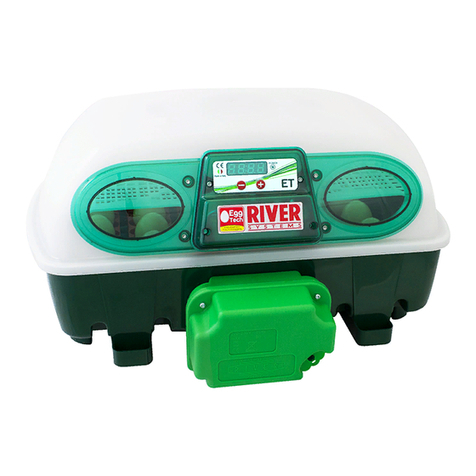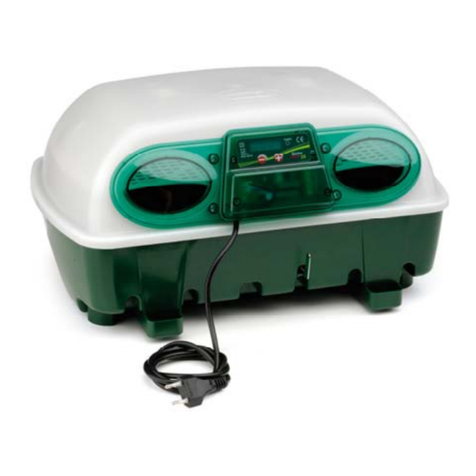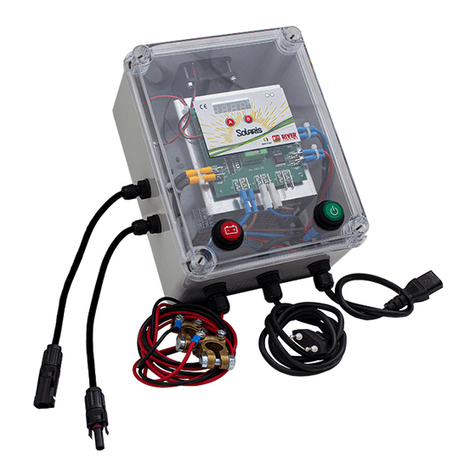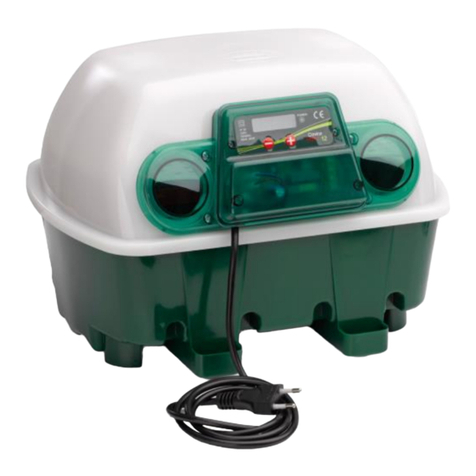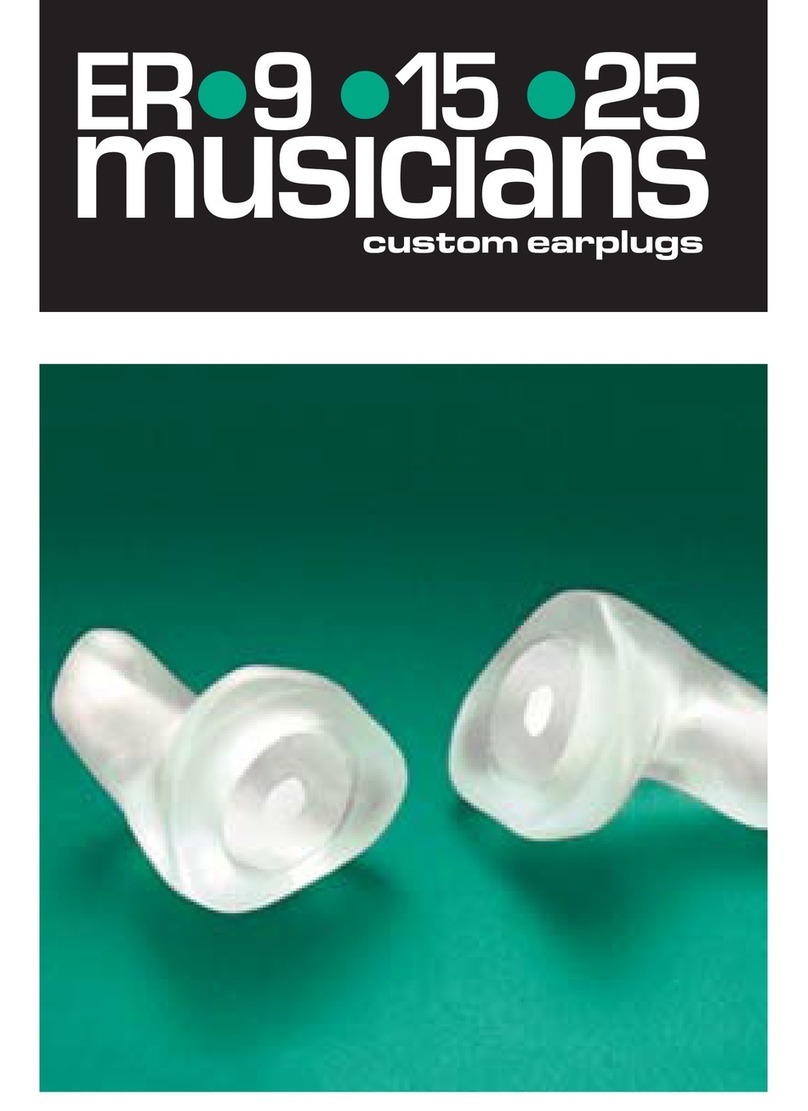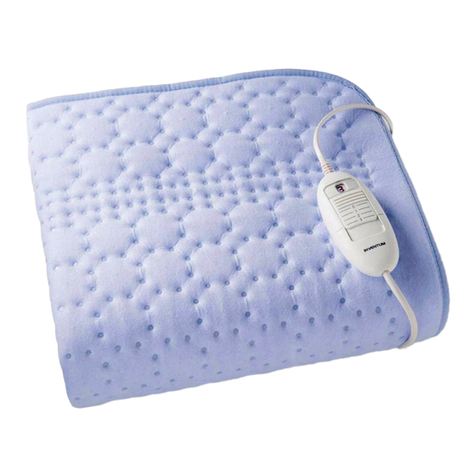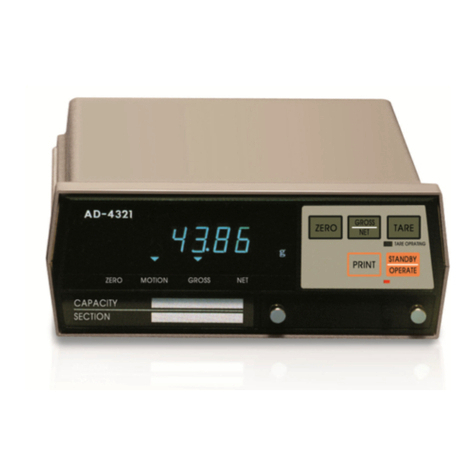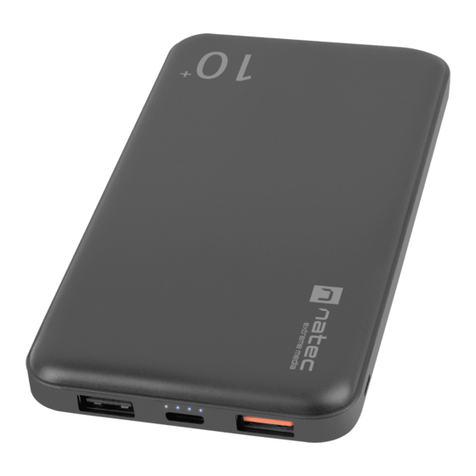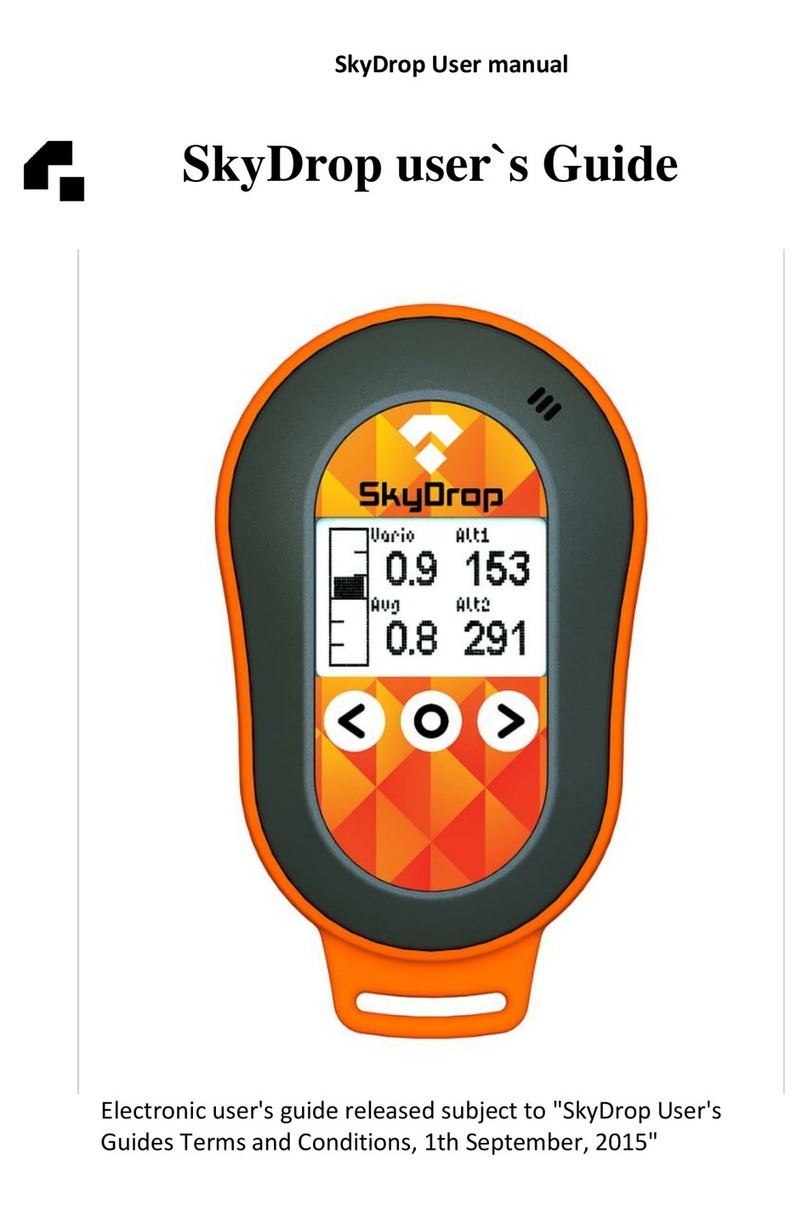river systems EggTech series User manual

ITManuale di utilizzo
ENUser Manual
EggTech
MADE IN ITALY
riversystems.it
riversystems.it
riversystems.it
riversystems.it
riversystems.it
riversystems.it
riversystems.it
riversystems.it
riversystems.it
riversystems.it
riversystems.it
riversystems.it
riversystems.it
riversystems.it
riversystems.it
riversystems.it
riversystems.it
riversystems.it
riversystems.it
riversystems.it
riversystems.it
riversystems.it
riversystems.it
riversystems.it
riversystems.it
riversystems.it
riversystems.it
riversystems.it
riversystems.it
riversystems.it
riversystems.it

Copyright © 2018 River Systems - All rights reserved
riversystems.it
riversystems.it
riversystems.it
riversystems.it
riversystems.it
riversystems.it
riversystems.it
riversystems.it
riversystems.it
riversystems.it
riversystems.it
riversystems.it
riversystems.it
riversystems.it
riversystems.it
riversystems.it
riversystems.it
riversystems.it
riversystems.it
riversystems.it
riversystems.it
riversystems.it
riversystems.it
riversystems.it
riversystems.it
riversystems.it
riversystems.it
riversystems.it
riversystems.it
riversystems.it
riversystems.it
riversystems.it
riversystems.it

Grazie per aver acquistato questo prodotto River Systems®,
frutto di esperienze tecnologiche e di una costante ricerca!
In questo manuale troverete tutte le informazioni ed i consigli per poter utilizzare l’incubatrice nel massimo della
sicurezza e dell’efficienza. Raccomandiamo di leggere attentamente il contenuto del manuale al fine
di poter intervenire correttamente nella manutenzione e poter sfruttare al meglio le caratteristiche specifiche
dell’incubatrice.
Le descrizioni e le illustrazioni contenute nel presente manuale e nel pieghevole allegato non si intendono
vincolanti; le foto e le illustrazioni sono a scopo illustrativo e si riferiscono ai modelli ET 24 o ET 49.
River Systems srl pertanto si riserva il diritto di apportare modifiche in qualunque momento e senza impegno,
di aggiornare la pubblicazione, di modificare componenti ed accessori a scopo migliorativo, o per qualsiasi
esigenza di carattere costruttivo e/o commerciale in funzione di una maggiore sicurezza e funzionalità.
Le istruzioni, i disegni, le tabelle e tutto ciò che è contenuto nel presente manuale sono di natura tecnica e
riservata; per questo motivo nessuna informazione può essere comunicata a terzi senza l’autorizzazione scritta
di River Systems srl che ne è la proprietaria esclusiva.
In caso di contestazione il testo valido di riferimento rimane l’italiano. Foro competente di Padova.
DICHIARAZIONE DI CONFORMITÀ “CE”
Il sottoscritto Stefano Concina, in qualità di legale rappresentante della ditta River Systems®srl con sede in Via
Marco Polo, 33 (ZI), 35011 Campodarsego, Padova (Italia), partita IVA 04289370282 dichiara che l’incubatrice
come da etichetta riportata qui di seguito
è stata costruita rispettando le seguenti norme:
DIRETTIVE: LVD 2014/35/EU, EMC 2014/30/EU, ROHS 2011/65/EU
NORME: EN 60335-2-71:2003 + A1:2007, EN 60335-1:2012 + AC:2014 + A11:2014, EN 55014-1:2006 +
A1:2009 + A2:2011, EN 61000-3-2:2014, EN 61000-3-3:2013, EN 55014-2:2015, EN 62233:2008
ed è quindi conforme alle norme vigenti.
Qualsiasi modifica apportata alla macchina senza il nostro consenso
rende la presente dichiarazione priva di ogni validità.
Campodarsego, 23.03.2016
ATTENZIONE
LEGGERE ATTENTAMENTE IL MANUALE DI ISTRUZIONI
PRIMA DI ESEGUIRE QUALSIASI OPERAZIONE.
Informazioni aggiuntive sono state inserite nel pieghevole allegato. Nello specifico si tratta delle foto esplicative
sull’uso dell’incubatrice, l’esploso dell’apparecchio e i suoi ricambi. Il pieghevole mostra inoltre esempi di uova,
come scegliere le uova da incubare ed altri prodotti River Systems.
INCOLLARE QUI L’ETICHETTA
FORNITA ASSIEME
AL PRODOTTO
Copyright © 2018 River Systems - All rights reserved
IT
- 3 -
riversystems.it
riversystems.it
riversystems.it
riversystems.it
riversystems.it
riversystems.it
riversystems.it
riversystems.it
riversystems.it
riversystems.it
riversystems.it
riversystems.it
riversystems.it
riversystems.it
riversystems.it
riversystems.it
riversystems.it
riversystems.it
riversystems.it
riversystems.it
riversystems.it
riversystems.it
riversystems.it
riversystems.it
riversystems.it
riversystems.it
riversystems.it
riversystems.it
riversystems.it
riversystems.it
riversystems.it

- 4 -
INDICE
1. AVVERTENZE – PRECAUZIONI IMPORTANTI...........................................................................5
2. CARATTERISTICHE E DATI TECNICI DELL’INCUBATRICE........................................................6
3. SELEZIONE E CONSERVAZIONE DELLE UOVA DA INCUBARE.................................................6
4. PREPARAZIONE E MESSA IN FUNZIONE DELL’INCUBATRICE................................................7
4A. COMANDI..............................................................................................................................7
4B. USO.....................................................................................................................................7
4C. IMPOSTAZIONE E REGOLAZIONE DELLA TEMPERATURA.................................................7
4D. INCUBAZIONE DELLE UOVA DI PALMIPEDI (OCA, ANATRA, ECC.)......................................8
4E. INFORMAZIONI PER UNA CORRETTA INCUBAZIONE.........................................................8
5. CONTROLLO PERIODICO DELLE UOVA DURANTE L’INCUBAZIONE (SPERATURA)...............9
6. SCHIUSA E NASCITA DEL PULCINO........................................................................................9
7. PRIMI GIORNI DI VITA...............................................................................................................9
8. PROBLEMI CHE SI POSSONO VERIFICARE DURANTE L’INCUBAZIONE..............................10
9. MANUTENZIONE, PULIZIA E STOCCAGGIO A FINE CICLO...................................................11
10. RIMOZIONE DELL’UNITA’ GIRAUOVA.....................................................................................11
11. GARANZIA........................................................................................................................................11
12. SMALTIMENTO........................................................................................................................12
13. TABELLA SOSTANZE DANNOSE PER LE PLASTICHE.........................................................244
PARTI INCUBATRICE (vedi pieghevole allegato)
1Pannello di controllo
1a Display digitale
1b LED di attivazione resistenza
1c Pulsante regolazione temperatura ( )
1d Pulsante regolazione temperatura ( )
2Scheda elettronica
3Oblò d’ispezione
4Cavo incubatrice
5Coperchio
6Tappo su foro per raccordo sistema di
umidificazione Nebula®
7Resistenza
8Supporti resistenza
9Distanziale
10 Turbina
11 Motore
12 Sonda di temperatura
13 Staffa supporto motore
14 Griglia protettiva
15 Coperchio completo
16 Asta vassoio portauova
17 Elemento vassoio portauova
18 Vassoio portauova completo
19 Griglia per la schiusa
20 Base incubatrice
21 Bocchetta di riempimento vaschetta acqua
22 Cavo unità girauova “Ovomatic”
23 Unità girauova “Ovomatic”
24 Chiavetta girauova
(per modello semiautomatico)
RICAMBI (vedi pieghevole allegato)
2
12 Scheda elettronica con sonda
6Tappo su foro per raccordo sistema di
umidificazione Nebula®
7Resistenza
10
11
13 Motore con turbina e staffe
15 Coperchio completo
16 Asta vassoio portauova
17 Elemento vassoio portauova
18 Vassoio portauova completo
19 Griglia per la schiusa
20 Base incubatrice
23 Unità girauova “Ovomatic”
24 Chiavetta girauova
(per modello semiautomatico)
Copyright © 2018 River Systems - All rights reserved
IT
riversystems.it
riversystems.it
riversystems.it
riversystems.it
riversystems.it
riversystems.it
riversystems.it
riversystems.it
riversystems.it
riversystems.it
riversystems.it
riversystems.it
riversystems.it
riversystems.it
riversystems.it
riversystems.it
riversystems.it
riversystems.it
riversystems.it
riversystems.it
riversystems.it
riversystems.it
riversystems.it
riversystems.it
riversystems.it
riversystems.it
riversystems.it
riversystems.it
riversystems.it
riversystems.it
riversystems.it
riversystems.it
riversystems.it

1. AVVERTENZE - PRECAUZIONI IMPORTANTI
Quando si usano apparecchi elettrodomestici occorre sempre seguire alcune basilari precauzioni di sicurezza,
incluse le seguenti:
1. Utilizzare l’apparecchio solo se l’impianto elettrico presenta caratteristiche conformi a quanto riportato
sull’etichetta apposta sull’apparecchio stesso e nel presente manuale.
2. Durante l’uso, l’incubatrice deve essere posizionata su di un tavolo, ad un’altezza di almeno 500 mm dal
pavimento, in posizione orizzontale, stabile e fissa.
3. Non porre l’incubatrice in prossimità di fonti di calore.
4. Tenere l’apparecchio al di fuori della portata dei bambini.
5. Questo apparecchio non è destinato all’uso da parte di persone (bambini compresi) con ridotte
capacità fisiche, mentali o sensoriali, o prive di esperienza e conoscenza, o non istruiti in merito all’uso
dell’apparecchio da parte di una persona responsabile della loro sicurezza.
6. Per evitare scosse elettriche, non immergere il coperchio in acqua o altri liquidi, stessa cosa vale per la
base nella versione con unità girauova art. 556M-1.
7. Non usare o riporre l’apparecchio in ambienti con sostanze corrosive, infiammabili o esplosive.
8. Prima dell’utilizzo, e comunque prima di inserire la spina nella presa di corrente, verificare lo stato dei
cavi esterni. Per scollegare l’apparecchio staccare la spina dalla presa di corrente.
9. Non usare l’apparecchio se il cavo elettrico, la spina, il circuito elettronico o la griglia di protezione sono
danneggiati, oppure se l’incubatrice è caduta o in qualche modo danneggiata. Affidare l’apparecchio al
centro di assistenza autorizzato più vicino richiedendone la verifica o la riparazione.
10. Se sul display compare la scritta ErtH o ErP1, scollegare l’incubatrice e rivolgersi al centro di assistenza.
11. Tenere l’incubatrice al riparo da urti.
12. Non aprire il frontalino di protezione della scheda elettronica o rimuovere la griglia di protezione
della ventola. L’ACCESSO ALLE PARTI CHIUSE O PROTETTE DELL’INCUBATRICE DEVE ESSERE
EFFETTUATO ESCLUSIVAMENTE DA PERSONALE AUTORIZZATO E SPECIALIZZATO SOLTANTO PER
OPERAZIONI DI MANUTENZIONE.
13. Staccare la spina dalla presa di corrente quando non si utilizza l’apparecchio, prima di procedere
all’apertura (sollevamento del coperchio) e alla pulizia.
14. Pulire la macchina solo dopo la fine del processo di incubazione.
15. Non utilizzare accessori non originali: accessori non raccomandati o non venduti dalla ditta produttrice
possono causare incidenti.
16. Non utilizzare all’aperto.
17. Non lasciare il cavo sospeso sul bordo del tavolo ed assicurarsi che non costituisca intralcio al libero
passaggio. Il cavo deve essere protetto e reso inaccessibile agli animali.
18. È preferibile che la formazione degli utilizzatori della macchina sia documentata.
19. CONSERVARE CON CURA QUESTE ISTRUZIONI.
ATTENZIONE!
IN CASO DI ARRESTO DELLA VENTOLA DURANTE IL PERIODO DI INCUBAZIONE
STACCARE IMMEDIATAMENTE LA SPINA E RIVOLGERSI AL CENTRO DI ASSISTENZA!
NOTA:
LADITTAPRODUTTRICENON PUO’ ESSERERITENUTAINALCUN CASO RESPONSABILE
DI INCIDENTI O DANNI CONSEGUENTI AD USI NON PREVISTI DELL’APPARECCHIO.
QUALSIASI USO NON PREVISTO DELL’APPARECCHIO COMPORTA INOLTRE IL
DECADIMENTO DEI TERMINI DI GARANZIA.
PERICOLO!
L’ACCESSO ALLE PARTI CHIUSE O PROTETTE DELL’INCUBATRICE DEVE ESSERE
EFFETTUATO ESCLUSIVAMENTE DA PERSONALE AUTORIZZATO E SPECIALIZZATO
SOLTANTO PER OPERAZIONI DI MANUTENZIONE.
ATTENZIONE:
POICHE’ SAREBBE IMPOSSIBILE DESCRIVERE TUTTE LE OPERAZIONI CHE NON
DEVONO O NON POSSONO ESSERE ESEGUITE, TUTTE LE OPERAZIONI (DIVERSE
DALLE NORMALI LAVORAZIONI) CHE NON SONO ESPLICITAMENTE DESCRITTE NEL
MANUALE DELL’INCUBATRICE, SONO DA CONSIDERARSI NON FATTIBILI.
QUESTO SEGNALE INDICA LA PRESENZA DI PARTI SOTTO TENSIONE.
- 5 -
Copyright © 2018 River Systems - All rights reserved
IT
riversystems.it
riversystems.it
riversystems.it
riversystems.it
riversystems.it
riversystems.it
riversystems.it
riversystems.it
riversystems.it
riversystems.it
riversystems.it
riversystems.it
riversystems.it
riversystems.it
riversystems.it
riversystems.it
riversystems.it
riversystems.it
riversystems.it
riversystems.it
riversystems.it
riversystems.it
riversystems.it
riversystems.it
riversystems.it
riversystems.it
riversystems.it
riversystems.it
riversystems.it
riversystems.it
riversystems.it

3.
SELEZIONE E CONSERVAZIONE DELLE UOVA DA INCUBARE
Uova trasportate possono avere una percentuale di schiusa inferiore al 50% a causa dello stress di viaggio,
vibrazioni, sbalzi di temperatura ed embrioni asfissiati (l’imballo non permette alle uova di respirare). Se
comunque si devono usare uova che abbiano viaggiato, prima di incubarle lasciarle riposare per almeno 24
ore, in un vassoio portauova e con la punta rivolta verso il basso.
Scegliere uova provenienti da riproduttori che siano ben sviluppati, ben nutriti e sani.
I riproduttori non devono essere consanguinei (i maschi devono arrivare da un altro allevamento), altrimenti
darebbero origine a uova con embrioni deboli e porterebbero a soggetti più vulnerabili e di salute cagionevole.
Fare attenzione che i riproduttori siano sessualmente maturi, non troppo vecchi (si consiglia di non oltrepassare
il 2°-3° anno d’età). Si devono inoltre rispettare le giuste proporzioni tra maschi e femmine e creare un ambiente
idoneo agli animali nel rispetto del loro benessere.
L’embrione inizia il suo sviluppo prima dell’incubazione e, di conseguenza, ha bisogno di una cura corretta,
altrimenti si avrà una diminuzione delle percentuali di schiusa. Le regole sottostanti aiuteranno ad ottenere
uova idonee per l’incubazione:
1. Raccogliere frequentemente le uova. Non conservare mai le uova in frigorifero.
2. Non incubare uova sporche: la contaminazione porta alla morte del pulcino.
Mai lavare le uova. Al massimo spazzolarle delicatamente con una spugnetta abrasiva asciutta.
3.
Conservare le uova in un locale fresco con una temperatura tra +14°C e +18°C ed un’umidità di circa 65-
- 6 -
2.
CARATTERISTICHE E DATI TECNICI DELL’INCUBATRICE
ET 12 ET 24 ET 49
Tensione 230 Volt 50/60 Hz monofase
Potenza massima 80 Watt AC 130 Watt AC 170 Watt AC
Consumo medio giornaliero Max.
1,0 kW/24 ore Max.
1,7 kW/24 ore Max.
2,3 kW/24 ore
Dimensioni (PxLxA)
Incubatrice semiautomatica 280x360x260 mm 340x500x255 mm 520x580x250 mm
Incubatrice con unità girauova 320x360x260 mm 380x500x255 mm 570x580x250 mm
Peso
Incubatrice semiautomatica 2,58 kg 3,56 kg 5,53 kg
Incubatrice con unità girauova 3,14 kg 4,12 kg 6,09 kg
Capacità incubatrice
(uova poste nel vassoio ad alveoli)
Uova di medie/grandi dimensioni 12 24 49
Uova di piccole dimensioni (es.
quaglia) 48 96 196
Range della temperatura Da 30°C a 40°C
Grado di protezione incubatrice
completa IPX4
Tipo di uova da incubare Gallina, fagiano, faraona, quaglia, starna, pernice, tacchino, pal-
mipedi (oca, anatra comune, anatra selvatica, anatra muta, anatra
germanata, ecc.), pavone, coturnice, piccione, colino, uccelli esotici
e rapaci
Corpo Materiale plastico
Cablaggio esterno Cavi di alimentazione a due poli in doppio isolamento
Display Controllo digitale della temperatura con punto decimale
Ventilazione A turbina
Sonda di temperatura Elettronica di precisione +/-0,1°C
Umidità nell’incubatrice 45-55% con acqua in una vaschetta
60-65% con acqua in entrambe le vaschette
Numero di inclinazioni nelle 24
ore (con uova poste nel vassoio
portauova ad alveoli)
Incubatrice
semiautomatica:
minimo 4 volte
Incubatrice con
unità girauova:
un’inclinazione ogni due ore
Copyright © 2018 River Systems - All rights reserved
IT
riversystems.it
riversystems.it
riversystems.it
riversystems.it
riversystems.it
riversystems.it
riversystems.it
riversystems.it
riversystems.it
riversystems.it
riversystems.it
riversystems.it
riversystems.it
riversystems.it
riversystems.it
riversystems.it
riversystems.it
riversystems.it
riversystems.it
riversystems.it
riversystems.it
riversystems.it
riversystems.it
riversystems.it
riversystems.it
riversystems.it
riversystems.it
riversystems.it
riversystems.it
riversystems.it
riversystems.it
riversystems.it
riversystems.it

- 7 -
75%.
È essenziale conservare le uova nel vassoio con la punta rivolta verso il basso, coperte con un panno
traspirante di colore scuro.
4. Le uova sono adatte all’incubazione dal secondo al sesto/settimo giorno dalla deposizione. Incubare uova
più vecchie di 8 giorni abbassa di molto la percentuale di nascite, riducendola a quasi zero in caso di uova
conservate per più di 15 giorni.
5. Le uova scelte per l’incubazione non devono mai essere raccolte nel periodo in cui i riproduttori sostengono
la muta del piumaggio: in questo periodo spesso le uova risultano non fecondate.
6. Le uova scelte per l’incubazione non devono essere raccolte nei periodi in cui gli animali sono sottoposti
a stress causato da alte o basse temperature.
7. Scegliere uova di forma normale (non devono essere allungate, sferiche, ondulate, o con qualsiasi altra
malformazione).
8. Il guscio dell’uovo non deve essere crepato, rotto, rugoso, molle, sottile o con punti bluastri (uova vecchie).
9. Permettere alle uova fredde (dalla temperatura di conservazione) di raggiungere lentamente la temperatura
della stanza prima di metterle nell’incubatrice. Il passaggio brusco da +14°C a +38°C provocherebbe la
condensa sul guscio, che sarebbe causa di una riduzione nelle nascite.
10. Evitare di incubare uova di diverse specie. Non inserire uova in un secondo tempo.
4. PREPARAZIONE E MESSA IN FUNZIONE DELL’INCUBATRICE
Il locale in cui si colloca l’incubatrice deve avere una temperatura compresa tra +20°C e +25°C, essere privo
di correnti d’aria, pulito, ben aerato e confortevole. Assicurarsi che la macchina non venga esposta ai raggi
diretti del sole o collocata vicino a fonti di calore come termosifoni, stufe, ecc. Si consiglia pertanto di tenerla
in casa.
Non usare o conservare l’incubatrice in locali dove siano presenti sostanze chimiche, velenose, tossiche o
infiammabili (anche in piccole concentrazioni), poiché hanno un’influenza negativa sullo sviluppo degli embrioni.
Non utilizzare l’incubatrice dove ci sia il pericolo di spruzzi d’acqua o altre sostanze.
4A - COMANDI
L’incubatrice non dispone di comandi e l’inserimento delle spine attiva rispettivamente la resistenza elettrica
ed i motori.
4B - USO
Il funzionamento è molto semplice:
a) Posizionare l’incubatrice sopra un tavolo piano alto minimo 500 mm dal pavimento, in posizione orizzontale,
stabile e fissa. Il fondo deve appoggiare direttamente sul piano del tavolo per evitare che qualsiasi oggetto
(una coperta, una tovaglia, ecc.) possa ostruire i fori di aerazione.
b) Togliere il coperchio e appoggiarlo a fianco dell’incubatrice con la griglia rivolta verso il basso.
c) Togliere la griglia di schiusa dalla base dell’incubatrice: essa è necessaria solo per la schiusa (ultimi 3
giorni). MAI LASCIARLA NELL’INCUBATRICE DURANTE IL PERIODO DI INCUBAZIONE! (foto A).
NB: lasciare la griglia di schiusa appoggiata in un luogo piano perché non si deformi (foto B).
d) Controllare che il vassoio portauova ad alveoli sia posizionato correttamente nelle sue sedi e che le file di
alveoli si inclinino liberamente nei due sensi (foto C e D).
e) Riempire di acqua tiepida, preferibilmente demineralizzata, la vaschetta di sinistra. Utilizzare la bocchetta
corrispondente posta sul piedino della macchina (foto E). Versare l’acqua lentamente e fare attenzione a
non farla tracimare dalla vaschetta: un eccesso di liquido causerebbe un aumento del tasso di umidità che
porterebbe alla diminuzione delle nascite. La seconda vaschetta (di destra) verrà riempita solo nella fase
finale di schiusa. L’acqua può essere rabboccata anche quando l’apparecchio è in funzione.
f) Riposizionare il coperchio assicurandosi che il bordo della parte inferiore si incastri perfettamente nella
canalina alla base del coperchio (foto F).
g) Inserire la spina collegata al coperchio in una presa di corrente appropriata. La turbina si accende
immediatamente, seguita dal display che mostra la temperatura interna dell’incubatrice. Il LED indica
che la resistenza è in funzione (foto G). Esso resterà acceso fino al raggiungimento della temperatura
impostata, poi inizierà a lampeggiare.
ATTENZIONE: SE LA VENTOLA NON SI METTE IN FUNZIONE, STACCARE IMMEDIATAMENTE LA
SPINA E RIVOLGERSI AL CENTRO DI ASSISTENZA.
La macchina è preimpostata ad una temperatura di 37,7°C, ideale per tutte le specie di volatili. È comunque
preferibile reimpostare la temperatura come descritto di seguito.
Se durante il funzionamento sul display compare la scritta ErtH o ErP1, scollegare l’incubatrice e rivolgersi al
centro di assistenza.
4C - IMPOSTAZIONE E REGOLAZIONE DELLA TEMPERATURA
Per impostare e modificare la temperatura premere i tasti ( ) e ( ) posti sul pannello di controllo. Premendo
uno dei due tasti si entra in modalità programmazione (sul display appare la lettera “P” accanto ai gradi – foto
H). Premere ad impulsi il tasto ( ) o ( ) per impostare la temperatura desiderata. Attendere qualche istante
che venga memorizzata (ricompare la temperatura interna del momento e la lettera “C” – foto I).
Copyright © 2018 River Systems - All rights reserved
IT
riversystems.it
riversystems.it
riversystems.it
riversystems.it
riversystems.it
riversystems.it
riversystems.it
riversystems.it
riversystems.it
riversystems.it
riversystems.it
riversystems.it
riversystems.it
riversystems.it
riversystems.it
riversystems.it
riversystems.it
riversystems.it
riversystems.it
riversystems.it
riversystems.it
riversystems.it
riversystems.it
riversystems.it
riversystems.it
riversystems.it
riversystems.it
riversystems.it
riversystems.it
riversystems.it
riversystems.it

- 8 -
Una volta impostata la nuova temperatura, attendere che la macchina si stabilizzi per verificare che essa venga
raggiunta. Se la temperatura viene aumentata la resistenza si attiverà (il LED sarà acceso) riscaldando l’aria
fino al suo raggiungimento. Se la temperatura viene abbassata la resistenza resterà inattiva (il LED sarà spento)
per permettere all’aria all’interno dell’incubatrice di raffreddarsi.
h) Lasciare la macchina in funzione vuota (senza uova) per almeno 2-3 ore per far stabilizzare temperatura e
umidità.
i) Dopo essersi accertati che la macchina funzioni correttamente, staccare la spina e togliere il coperchio,
posandolo accanto all’incubatrice. Mettere delicatamente le uova negli alveoli con la punta rivolta verso
il basso. Richiudere l’incubatrice e ricollegare la spina.
INCUBATRICE CON UNITÀ GIRAUOVA INCUBATRICE SEMIAUTOMATICA
Avviare l’unità girauova inserendo la spina di
alimentazione collegata al dispositivo in una
presa di corrente appropriata. L’unità girauova
inizierà a funzionare. Il vassoio portauova
effettua un’inclinazione ogni due ore (foto J: ad
un’ora dall’avviamento – foto K: due ore dopo).
Attenzione: il movimento non sarà evidente
in quanto molto lento. Assicurarsi comunque
che questo accada.
Minimo 4 volte al giorno cambiare l’inclinazione
delle uova alloggiate nel vassoio portauova ad
alveoli agendo sulla levetta posta nella parte
anteriore dell’incubatrice. Girare la levetta verso
destra o sinistra alternativamente, fermandola
nella posizione corrispondente alle ore 10 o 14 di
un orologio (foto L). MAI LASCIARE LA LEVETTA
(E DI CONSEGUENZA LE UOVA) IN POSIZIONE
VERTICALE (ORE 12). Muovere la levetta con
delicatezza per evitare traumi alle uova.
Non coprire mai l’incubatrice né tenerla dentro ad una scatola mentre è in funzione. Ciò impedirebbe il ricambio
di aria al suo interno, necessario per lo sviluppo dell’embrione, che avviene attraverso i fori di aerazione
presenti sia nella base dell’incubatrice che dai due oblò di ispezione (foto M).
A questo punto inizia il ciclo di incubazione. Si consiglia di segnare il giorno su un calendario e di seguire le
istruzioni riportate nella tabella presente nella sezione 4E “Informazioni per una corretta incubazione”.
Controllare giornalmente la presenza dell’acqua nella vaschetta, verificandone il livello attraverso la bocchetta
(il livello che si vede dentro alla bocchetta di riempimento corrisponde a quello nella vaschetta). Rabboccare
con acqua demineralizzata pulita e tiepida (+35/40°C).
Tenere presente che è lo specchio d’acqua (cioè la superficie) e non la quantità a generare l’umidità, pertanto
l’altezza dell’acqua nella vaschetta non influirà sul tasso di umidità. La verifica puntuale e costante della
presenza di acqua nella vaschetta garantirà l’umidità necessaria, evitando che la stessa resti asciutta.
In caso di interruzione di corrente, appoggiare sui 4 lati dell’incubatrice altrettante bottiglie contenenti acqua
calda e mettere una coperta sopra il tutto. Questo permette di mantenere una certa temperatura all’interno
dell’incubatrice. Togliere il tutto non appena torna la corrente. Non tenere l’incubatrice coperta a lungo: una
scarsa ossigenazione al suo interno ridurrebbe drasticamente le percentuali di nascita.
4D - INCUBAZIONE DELLE UOVA DI PALMIPEDI (OCA, ANATRA, ECC.)
Dal decimo giorno di incubazione fino a tre giorni prima della prevista schiusa, una volta al giorno staccare
la spina dalla presa di corrente, aprire l’incubatrice e lasciare raffreddare le uova per 15 minuti. Prima di
riposizionare il coperchio, nebulizzare un velo d’acqua con uno spruzzino.
4E - INFORMAZIONI PER UNA CORRETTA INCUBAZIONE
Temperatura suggerita all’inizio dell’incubazione: 37,7°C.
Temperatura suggerita durante gli ultimi 3 giorni prima della schiusa: 37,2°C.
Fare riferimento alla seguente tabella per ottenere un’incubata di successo:
SPECIE
TEMPO DI
INCUBAZIONE
PER UNA
CORRETTA
UMIDITÀ DURANTE
L’INCUBAZIONE
RIEMPIRE
NON GIRARE
LE UOVA
DOPO
PER UNA CORRETTA
UMIDITÀ DURANTE GLI
ULTIMI 3 GIORNI
PRIMA DELLA SCHIUSA
RIEMPIRE
Gallina 21 giorni 1 vaschetta d’acqua Giorno 18 2 vaschette d’acqua
Fagiano 23-25 giorni 1 vaschetta d’acqua Giorno 21 2 vaschette d’acqua
Quaglia 16-17 giorni 1 vaschetta d’acqua Giorno 14 2 vaschette d’acqua
Faraona 26-28 giorni 1 vaschetta d’acqua Giorno 23 2 vaschette d’acqua
Tacchino 28 giorni 1 vaschetta d’acqua Giorno 25 2 vaschette d’acqua
Starna / pernice 23-24 giorni 1 vaschetta d’acqua Giorno 20 2 vaschette d’acqua
Pavone 28 giorni 1 vaschetta d’acqua Giorno 25 2 vaschette d’acqua
Oca 29-31 giorni 1 vaschetta d’acqua Giorno 27 2 vaschette d’acqua
Anatra germanata
e selvatica 27-28 giorni 1 vaschetta d’acqua Giorno 24 2 vaschette d’acqua
Anatra muta 33-35 giorni 1 vaschetta d’acqua Giorno 30 2 vaschette d’acqua
Copyright © 2018 River Systems - All rights reserved
IT
riversystems.it
riversystems.it
riversystems.it
riversystems.it
riversystems.it
riversystems.it
riversystems.it
riversystems.it
riversystems.it
riversystems.it
riversystems.it
riversystems.it
riversystems.it
riversystems.it
riversystems.it
riversystems.it
riversystems.it
riversystems.it
riversystems.it
riversystems.it
riversystems.it
riversystems.it
riversystems.it
riversystems.it
riversystems.it
riversystems.it
riversystems.it
riversystems.it
riversystems.it
riversystems.it
riversystems.it
riversystems.it
riversystems.it

5. CONTROLLO PERIODICO DELLE UOVA DURANTE
L’INCUBAZIONE (SPERATURA)
La speratura è una tecnica che permette di verificare se le uova sono fecondate o meno e di accertare lo sviluppo
dell’embrione.
L’operazione deve essere effettuata in una stanza buia, usando un fascio di luce intensa (es. uno sperauova)
direzionata sull’uovo. Essa va ripetuta tre volte durante il ciclo di incubazione, partendo dall’ottavo/decimo
giorno, ad intervalli di circa una settimana a seconda del tipo di uovo. Le uova non fertili o il cui embrione è morto
dovranno essere eliminate.
La speratura è un’operazione complicata e delicata che può portare a compiere errori ed eliminare uova fecondate.
Poiché è facoltativa, se non si ha esperienza suggeriamo di non effettuarla e di procedere con l’incubazione.
6. SCHIUSA E NASCITA DEL PULCINO
L’operazione descritta qui di seguito è molto delicata e deve essere eseguita velocemente per evitare che le
uova si raffreddino. Suggeriamo di effettuarla in due persone per ridurre al massimo i tempi.
Tre giorni prima della prevista data di schiusa:
a)
b) Togliere le uova dagli alveoli e posarle delicatamente su una coperta o su un apposito vassoio portauova.
c) Rimuovere il vassoio portauova ad alveoli (foto O).
d) Porre la griglia di schiusa in dotazione (estratta prima dell’inizio dell’incubazione) nella base dell’incubatrice
assicurandosi che le due linguette della griglia coprano l’interno delle due bocchette di riempimento (foto
P) per evitare che i pulcini vi cadano dentro e anneghino.
e) Distribuire le uova sulla griglia (foto Q) e richiudere il coperchio.
f) Riempire entrambe le vaschette con acqua demineralizzata tiepida.
g) Modificare la temperatura portandola a 37,2°C (vedi istruzioni a pag. 7).
IMPORTANTE
Durante gli ultimi 3 giorni:
- Non girare le uova.
-
Non aprire inutilmente l’incubatrice. Questo farebbe fuoriuscire l’umidità e il calore necessari alla nascita
dei pulcini, causandone la morte dentro al guscio. È consigliato aprire l’incubatrice, solamente dopo aver
scollegato la spina dalla presa di corrente, massimo una volta al giorno per estrarre i pulcini ben asciutti.
Tenere i nuovi nati nell’incubatrice per circa 12 ore. Possono restarvi dentro per 3 giorni senza bere né mangiare
senza soffrirne.
Al termine dei giorni previsti, lasciare l’incubatrice in funzione per altri 2 o 3 giorni per permettere la schiusa dei
pulcini ritardatari.
7. PRIMI GIORNI DI VITA
Mettere i pulcini in un ambiente che assicuri il calore e la luce necessaria, senza correnti d’aria, dove potranno
essere nutriti e abbeverati.
SUGGERIMENTI: si può usare una scatola in cartone che sia abbastanza grande da contenere un abbeveratoio
e una mangiatoia (min. 50x50 cm) e ricoprirne il fondo con fogli di carta di giornale da cambiare quotidianamente.
Per il riscaldamento, appendere un riflettore con lampada a raggi infrarossi a circa 20-25 cm da terra. Regolare
la temperatura cambiando l’altezza del riflettore.
INCUBATRICE CON UNITÀ GIRAUOVA INCUBATRICE SEMIAUTOMATICA
Fermare l’unità girauova togliendo la spina dalla
presa di alimentazione quando le uova sono in
posizione verticale (per facilitare l’estrazione del
vassoio portauova ad alveoli una volta tolte le
uova).
Sfilare la levetta in metallo posta nella parte
anteriore dell’incubatrice (foto N).
INCUBATRICE CON UNITÀ GIRAUOVA INCUBATRICE SEMIAUTOMATICA
Sollevare il vassoio estraendolo dalla linguetta
dell’unità girauova.
Nota per ciclo seguente:
Fare attenzione a reinserire il vassoio correttamente
quando verrà riposizionato. Se dopo vari cicli
d’incubazione si nota che la fessura in cui è inserita
la linguetta dell’unità girauova è troppo larga,
scambiare la fila con un’altra del vassoio.
Rimuovere il vassoio.
Nota per ciclo seguente:
Fare attenzione a reinserire sia il vassoio che
la levetta correttamente quando verranno
riposizionati.
- 9 -
Copyright © 2018 River Systems - All rights reserved
IT
riversystems.it
riversystems.it
riversystems.it
riversystems.it
riversystems.it
riversystems.it
riversystems.it
riversystems.it
riversystems.it
riversystems.it
riversystems.it
riversystems.it
riversystems.it
riversystems.it
riversystems.it
riversystems.it
riversystems.it
riversystems.it
riversystems.it
riversystems.it
riversystems.it
riversystems.it
riversystems.it
riversystems.it
riversystems.it
riversystems.it
riversystems.it
riversystems.it
riversystems.it
riversystems.it
riversystems.it

- 10 -
PROBLEMA POSSIBILE CAUSA SUGGERIMENTO
Uova limpide.
Vasi sanguigni non
presenti (visibili
durante la speratura)
Uova non fecondate a causa di troppi o
troppo pochi galli, anziani o infertili Usare solo galli giovani, vigorosi e non
consanguinei
Anelli di sangue visibili
durante la speratura
Conservazione troppo prolungata prima
dell’incubazione Non conservare le uova per più di 7
giorni
Temperatura nel locale di stoccaggio
troppo alta o bassa Assicurarsi che la temperatura nel
locale sia tra +14°C e +18°C
Inadeguata cura delle uova prima
dell’incubazione Verificare il corretto stoccaggio delle
uova
Uova non raccolte abbastanza di
frequente Raccogliere le uova più spesso
durante la giornata
Camera d’aria troppo
grande (eccessiva
perdita di peso)
Uova troppo piccole, umidità troppo
bassa durante la fase di incubazione Rispettare le istruzioni date nel capitolo
3 riguardanti la scelta del locale
dove incubare e il riempimento delle
vaschette dell’acqua
Camera d’aria troppo
piccola (ridotta
perdita di peso)
Uova troppo grandi, umidità troppo alta
durante la fase di incubazione Rispettare le istruzioni date nel capitolo
3 riguardanti la scelta del locale
dove incubare e il riempimento delle
vaschette dell’acqua
Molti embrioni morti /
I pulcini muoiono
prima di bucare
l’uovo
Riproduttori consanguinei I riproduttori non devono essere fratelli
Uova vecchie Stoccare le uova per max. 7 giorni
Riproduttori anziani
I riproduttori non devono avere più di
2-3 anni
Incubatrice semiautomatica: uova
non sufficientemente girate durante
l’incubazione
Girare le uova almeno 4 volte al giorno
Contaminazione batterica Assicurarsi che le uova siano ben
pulite
Carenze nutritive Alimentare i riproduttori con mangime
specifico
Uova che hanno viaggiato per lunghe
distanze Incubare uova locali
Umidità incorretta durante l’incubazione Rispettare le informazioni date sul
riempimento delle vaschette dell’acqua
L’incubatrice ha funzionato in locali toppo
caldi Assicurarsi che la temperatura nella
stanza NON superi i +26°C
L’incubatrice è stata aperta più volte
durante la schiusa Aprire al massimo una volta al giorno
per togliere i pulcini ben asciutti
Altre cause Seguire le istruzioni date nei capitoli 3
e 4
Le uova esplodono Uova sporche Incubare uova pulite
Pulcini con
malformazioni
agli arti inferiori
Umidità incorretta durante l’incubazione
Rispettare le istruzioni sulla quantità
d’acqua necessaria
L’incubatrice ha funzionato in un locale
con temperature sotto +20°C Assicurarsi che la temperatura nella
stanza sia di minimo +20°C
Riproduttori consanguinei I riproduttori non devono essere fratelli
8. PROBLEMI CHE SI POSSONO VERIFICARE DURANTE
L’INCUBAZIONE
IT
Copyright © 2018 River Systems - All rights reserved
riversystems.it
riversystems.it
riversystems.it
riversystems.it
riversystems.it
riversystems.it
riversystems.it
riversystems.it
riversystems.it
riversystems.it
riversystems.it
riversystems.it
riversystems.it
riversystems.it
riversystems.it
riversystems.it
riversystems.it
riversystems.it
riversystems.it
riversystems.it
riversystems.it
riversystems.it
riversystems.it
riversystems.it
riversystems.it
riversystems.it
riversystems.it
riversystems.it
riversystems.it
riversystems.it
riversystems.it
riversystems.it
riversystems.it

9
. MANUTENZIONE, PULIZIA E STOCCAGGIO A FINE CICLO
La pulizia può essere effettuata solo a macchina spenta e solo con apparecchio a temperatura ambiente.
Non immergere in acqua per pulirle le parti che possono andare in tensione durante l’uso.
La sporcizia può creare danni all’apparecchiatura, al processo in essa eseguito ed agli utilizzatori, quindi
evitate la presenza di sporco dentro e fuori l’apparecchiatura.
A fine ciclo, lavare accuratamente la parte inferiore dell’incubatrice con del detersivo neutro, poi disinfettarla
con Amuchina o candeggina (si usi pure quella per il bucato). Non usare alcol o altri detergenti chimici.
Pulire accuratamente la parte esterna del coperchio con un panno morbido bagnato in acqua e ben strizzato.
Pulire la parte esterna della griglia di protezione del coperchio con un panno morbido bagnato con Amuchina
o candeggina. Soffiarne la parte interna con dell’aria compressa per rimuovere le piume perse dai pulcini.
Durante queste operazioni l’incubatrice e l’unità girauova devono essere scollegate dalla presa di
corrente.
Non usare solventi, diluenti e sostanze chimiche tossiche. Fare riferimento alla tabella a fine manuale per
l’elenco delle sostanze dannose per le plastiche.
Lasciare asciugare perfettamente tutte le componenti. Riporre l’incubatrice in un posto asciutto, al riparo da
urti e variazioni di temperatura. Non mettere alcun oggetto sopra l’incubatrice.
La manutenzione delle parti elettriche non è di competenza dell’utilizzatore.
10. RIMOZIONE DELL’UNITÀ GIRAUOVA
Qualora fosse necessario rimuovere l’unità girauova dall’incubatrice, seguire le seguenti istruzioni:
a) Rimuovere il vassoio portauova ad alveoli (foto O).
b) Dopo aver capovolto la base, svitare le due viti poste sul fondo (foto R e S).
c) Svitare la vite all’interno della base della dell’incubatrice (foto T).
d) Sfilare l’unità girauova.
ATTENZIONE!
E’ VIETATO APRIRE L’UNITÀ GIRAUOVA RIMUOVENDO LE QUATTRO VITI INDICATE
DALLE FRECCE (FOTO U).
L’APERTURA DEL DISPOSITIVO CAUSERÀ IL DECADIMENTO DELLA GARANZIA DELLO
STESSO.
11. GARANZIA
Le norme di garanzia hanno valore soltanto se l’incubatrice viene impiegata nelle condizioni di uso previsto.
Fatta esclusione per gli interventi di manutenzione ordinaria e straordinaria descritti alla sez. PULIZIA ed eseguiti
con le procedure indicate, qualsiasi riparazione o modifica apportata al dispositivo dall’utilizzatore o da ditte
non autorizzate determina la decadenza della garanzia.
La garanzia non si estende ai danni causati da imperizia o negligenza nell’uso dell’incubatrice, o da cattiva od
omessa manutenzione.
I prodotti da noi venduti sono coperti da garanzia alle seguenti condizioni:
1. La garanzia è valida per un periodo di dodici/ventiquattro (12/24) mesi: 12 mesi per aziende, 24 per privati.
2. Il produttore si assume l’impegno di sostituire a propria discrezione le parti mal funzionanti o di errata
fabbricazione, solo dopo un accurato controllo e riscontro di cattiva costruzione.
3. Sono sempre a carico dell’acquirente le spese di trasporto e/o spedizione.
4. Durante il periodo di garanzia i prodotti sostituiti diventano di proprietà del produttore.
5.
Di questa garanzia può beneficiare solamente l’acquirente originale che abbia rispettato le indicazioni
di normale manutenzione contenute nel manuale. La responsabilità del produttore sulla garanzia scade
nel momento in cui il proprietario originale cede la proprietà del prodotto, oppure siano state apportate
modifiche allo stesso
.
6. La garanzia non copre danni derivati da un’eccessiva sollecitazione come ad esempio l’utilizzo del prodotto
dopo la constatazione di un’anomalia o surriscaldamento del motore, dall’utilizzo di metodi d’esercizio non
adeguati nonché dalla mancata osservazione delle istruzioni d’uso e manutenzione.
7. Il produttore non si assume alcuna responsabilità per eventuali difficoltà che dovessero sorgere nella
rivendita o nell’utilizzo all’estero dovuto alle disposizioni in vigore nel Paese in cui il prodotto è stato
venduto.
8. Il prodotto o parte del prodotto difettoso deve essere consegnato al produttore per la sostituzione; in caso
contrario la parte sostituita verrà addebitata all’acquirente.
- 11 -
IT
Copyright © 2018 River Systems - All rights reserved
riversystems.it
riversystems.it
riversystems.it
riversystems.it
riversystems.it
riversystems.it
riversystems.it
riversystems.it
riversystems.it
riversystems.it
riversystems.it
riversystems.it
riversystems.it
riversystems.it
riversystems.it
riversystems.it
riversystems.it
riversystems.it
riversystems.it
riversystems.it
riversystems.it
riversystems.it
riversystems.it
riversystems.it
riversystems.it
riversystems.it
riversystems.it
riversystems.it
riversystems.it
riversystems.it
riversystems.it

AVVISO
Qualora si ritenesse necessario l’utilizzo della garanzia, Vi preghiamo di indicare i seguenti dati:
- Modello
- Data di acquisto (presentazione del documento di acquisto)
- Descrizione dettagliata del problema
NOTA:
ILMANCATORISPETTO DELLE MODALITA’ DIINTERVENTOED USODELL’INCUBATRICE
PER UOVA DESCRITTE NELLA PRESENTE DOCUMENTAZIONE COMPORTA IL
DECADIMENTO DEI TERMINI DI GARANZIA.
La garanzia non copre fermi macchina, mancata produzione etc.
12. SMALTIMENTO
In caso di smaltimento, fare riferimento alle norme locali per la rottamazione degli apparecchi
elettrici ed elettronici (D.Lgs n. 151 del 25/7/05 – 2002/96/CE – 2003/108/CE. Per nessuna
ragione gettare l’incubatrice tra i rifiuti comuni.
Lo smaltimento dei rifiuti elettrici che non rispetti le norme vigenti comporta l’applicazione di
sanzioni amministrative e penali.
NOTA:
IL PRODUTTORE NON È IN ALCUN MODO RESPONSABILE DI DANNI CAUSATI
DALL’APPARECCHIO SE NON UTILIZZATO NELLA VERSIONE INTEGRALE E PER GLI
USI E LE MODALITA’ D’USO SPECIFICATE NEL PRESENTE MANUALE. IL PRODUTTORE
NON È IN ALCUN MODO RESPONSABILE DI ALCUN DANNO A PERSONE O COSE
DERIVANTE DAL RECUPERO DI PARTI DELL’APPARECCHIO UTILIZZATE DOPO IL SUO
SMANTELLAMENTO.
DATI DEL PRODUTTORE ASSISTENZA AUTORIZZATA
River Systems s.r.l.
Via Marco Polo, 33 (ZI)
35011 Campodarsego Padova (Italia)
Partita IVA: 04289370282
Per avere assistenza sul prodotto rivolgersi al
rivenditore o a:
River Systems s.r.l.
Via Pontarola, 15/A (ZI)
35011 Campodarsego Padova (Italia)
Copyright © 2018 River Systems - All rights reserved
- 12 -
IT
riversystems.it
riversystems.it
riversystems.it
riversystems.it
riversystems.it
riversystems.it
riversystems.it
riversystems.it
riversystems.it
riversystems.it
riversystems.it
riversystems.it
riversystems.it
riversystems.it
riversystems.it
riversystems.it
riversystems.it
riversystems.it
riversystems.it
riversystems.it
riversystems.it
riversystems.it
riversystems.it
riversystems.it
riversystems.it
riversystems.it
riversystems.it
riversystems.it
riversystems.it
riversystems.it
riversystems.it
riversystems.it
riversystems.it

Thank you for purchasing this River Systems®product, the
result of technological innovations and constant research!
This manual provides all instructions and advices to properly use the incubator safely and efficiently. Read
carefully all parts of this manual before using the machine in order to intervene correctly in the maintenance
and to take full advantage of the specific characteristics of the incubator.
The descriptions and illustrations contained in this manual and in the flyer are not binding; photos and
illustrations are only for illustrative purposes and refer to ET 24 or ET 49.
River Systems srl therefore reserves the right to make changes at any time without obligation, to update the
publication, to modify components and accessories for further improvement, or for any manufacturing and/or
commercial reason to improve safety and functionality.
The instructions, drawings, tables and all contents of this manual are technical in nature and reserved; for this
reason no information can be communicated to third parties without written consent from its sole owner, River
Systems srl.
In case of dispute the Italian text is the only valid one, and the place of jurisdiction is Padua (Italy).
DECLARATION OF CONFORMITY “CE”
The undersigned Stefano Concina as legal representative of company River Systems® s.r.l. based in Via Marco
Polo, 33 (ZI) 35011 Campodarsego, Padova (Italy), VAT code: 04289370282 declares that the incubator as
per the label below
has been manufactured complying with the following standards:
DIRECTIVES: LVD 2014/35/EU, EMC 2014/30/EU, ROHS 2011/65/EU
STANDARDS: EN 60335-2-71:2003 + A1:2007, EN 60335-1:2012 + AC:2014 + A11:2014, EN 55014-
1:2006 + A1:2009 + A2:2011, EN 61000-3-2:2014, EN 61000-3-3:2013, EN 55014-2:2015, EN 62233:2008
and therefore it conforms with the standards in force.
This declaration shall cease to be valid if
the machine is modified without our prior approval.
Campodarsego, 23.03.2016
NOTICE
BEFORE YOU PERFORM ANY OPERATION,
READ CAREFULLY THIS INSTRUCTION MANUAL.
Additional information can be found in the attached flyer. Specifically, there you can find explanatory photos on
the use of the incubator, exploded view drawing and spare parts. The flyer also shows examples of eggs, how
to select the eggs to incubate, as well as other River Systems products.
STICK HERE
THE LABEL SUPPLIED
WITH THE PRODUCT
- 13 -
Copyright © 2018 River Systems - All rights reserved
EN
riversystems.it
riversystems.it
riversystems.it
riversystems.it
riversystems.it
riversystems.it
riversystems.it
riversystems.it
riversystems.it
riversystems.it
riversystems.it
riversystems.it
riversystems.it
riversystems.it
riversystems.it
riversystems.it
riversystems.it
riversystems.it
riversystems.it
riversystems.it
riversystems.it
riversystems.it
riversystems.it
riversystems.it
riversystems.it
riversystems.it
riversystems.it
riversystems.it
riversystems.it
riversystems.it
riversystems.it

1Control panel
1a Digital display
1b LED “resistor on”
1c Temperature setting button ( )
1d Temperature setting button ( )
2Electronic card
3Inspection window
4Incubator electric cord
5Lid
6Bung on hole for connection to
humidification system Nebula®
7Resistor
8Resistor supports
9Spacer
10 Fan impeller
- 14 -
INDEX
1. WARNINGS – IMPORTANT PRECAUTIONS............................................................................15
2. TECHNICAL SPECIFICATIONS AND DATA..............................................................................16
3. EGG SELECTION AND STORAGE FOR INCUBATION............................................................16
4. PREPARATION AND START-UP OF THE INCUBATOR.............................................................17
4A. CONTROLS.........................................................................................................................17
4B. USE....................................................................................................................................17
4C. TEMPERATURESETTINGANDADJUSTMENT.....................................................................17
4D. INCUBATION OF PALMIPEDS-EGGS (GOOSE, DUCK, ETC.).............................................18
4E. INFORMATION FOR A CORRECT INCUBATION.................................................................18
5. PERIODIC CHECK OF EGGS DURING INCUBATION (CANDLING).........................................19
6. HATCHING AND BIRTH OF THE CHICK.................................................................................19
7. FIRST DAYS OF LIFE..............................................................................................................19
8. PROBLEMS THAT MAY ARISE DURING INCUBATION...........................................................20
9. MAINTENANCE CLEANING AND STORAGE AT THE END OF THE CYCLE...........................21
10. REMOVAL OF THE EGG TURNING UNIT.................................................................................21
11. WARRANTY..............................................................................................................................21
12. DISPOSING OF THE UNIT.......................................................................................................22
13. LIST OF THE SUBSTANCES THAT WOULD DAMAGE THE PLASTICS..................................244
ELEMENTS OF THE INCUBATOR (see attached flyer)
SPARE PARTS (see attached flyer)
EN
11 Motor
12 Temperature probe
13 Motor support
14 Upper protection grill
15 Complete lid
16 Egg tray bar
17 Egg tray element
18 Complete egg tray
19 Floor for hatching
20 Incubator base
21 Opening for filling of water basin
22 Egg turning unit “Ovomatic” electric cord
23 Egg turning unit “Ovomatic”
24 Egg tilting handle
(for semi-automatic incubator)
2
12 Electronic card with temperature probe
6Bung on hole for connection to
humidification system Nebula®
7Resistor
10
11
13 Motor with fan impeller and supports
15 Complete lid
16 Egg tray bar
17 Egg tray element
18 Complete egg tray
19 Floor for hatching
20 Incubator base
23 Egg turning unit “Ovomatic”
24 Egg tilting handle
(for semi-automatic incubator)
Copyright © 2018 River Systems - All rights reserved
riversystems.it
riversystems.it
riversystems.it
riversystems.it
riversystems.it
riversystems.it
riversystems.it
riversystems.it
riversystems.it
riversystems.it
riversystems.it
riversystems.it
riversystems.it
riversystems.it
riversystems.it
riversystems.it
riversystems.it
riversystems.it
riversystems.it
riversystems.it
riversystems.it
riversystems.it
riversystems.it
riversystems.it
riversystems.it
riversystems.it
riversystems.it
riversystems.it
riversystems.it
riversystems.it
riversystems.it
riversystems.it
riversystems.it

1. WARNINGS – IMPORTANT PRECAUTIONS
When using household appliances it is important to follow some basic safety precautions, including the
following ones:
1. Use the appliance only when the wiring characteristics conform to the ones written in the present
manual and on the label affixed on the machine.
2. While working, the incubator must be on a table, in a horizontal position, stable and secure. The table
must be at least 500 mm high.
3. Do not place the incubator next to heat sources.
4. Do not leave the appliance within children’s reach.
5. This appliance is not to be used by people (children included) with reduced physical, sensorial or mental
capabilities, or with no experience and knowledge, or not properly instructed on the use of the incubator
by a person in charge of their safety.
6. To prevent electric shocks, do not immerse the cover in water or other liquids. This is applicable also to
the base in the version with egg turning unit art. 556M-1.
7. Do not use or store the appliance in rooms with corrosive, flammable or explosive substances.
8. Before using the incubator and before plugging it in, check the external wiring. To disconnect the
machine unplug it from the socket.
9. Do not use the incubator if the electric cord, the plug or the upper protection grill are damaged, or if the
incubator has been dropped or has been damaged in any way. Take the appliance to the closest service
centre requesting a checkup or reparation.
10. If the message ErtH or ErP1 appears on the display, unplug the incubator and take it to the closest
service centre.
11. Keep the incubator safe from hits.
12. Do not open the cover of the electronic circuit or remove the fan guard (protection grill). ACCESS
TO THE CLOSED OR PROTECTED PARTS OF THE INCUBATOR IS ALLOWED ONLY IN CASE OF
MAINTENANCE OPERATIONS BY AUTHORISED AND SPECIALISED PERSONNEL.
13. Unplug the incubator when not in use, before opening it (lifting the cover) and before cleaning it.
14. Clean the machine only after the incubation process is finished.
15. Do not use non original accessories. Accessories not recommended or not sold by the producer can
cause damage.
16. Do not use the equipment outdoors.
17. Do not leave the electric cord hanging on the edge of the table and ensure that it cannot be accidentally
entangled. The cord must be protected and kept out of reach of animals.
18. User training should be recorded.
19. KEEP THIS MANUAL FOR REFERENCE.
WARNING!
IF THE FAN IMPELLER STOPS DURING THE INCUBATION, UNPLUG IMMEDIATELY THE
INCUBATOR AND CONTACT THE SERVICE CENTRE!
NOTE:
THE PRODUCER CANNOT BE HELD IN ANY WAY RESPONSIBLE FOR ANY ACCIDENT
OR DAMAGE DUE TO THE IMPROPER USE OF THE APPLIANCE. THE GUARANTEE
BECOMES VOID IN CASE OF IMPROPER USE.
DANGER!
OPENING THE CLOSED OR PROTECTED PARTS OF THE INCUBATOR IS ALLOWED
ONLY FOR MAINTENANCE OPERATIONS BY TRAINED AND AUTHORISED PERSONNEL.
WARNING:
SINCE IT IS IMPOSSIBLE TO DESCRIBE ALL THE OPERATIONS THAT SHALL NOT OR
CANNOT BE MADE, ANY OPERATION (NOT BEING ORDINARY OPERATIONS) THAT
IS NOT SPECIFICALLY DESCRIBED IN THIS MANUAL IS TO BE CONSIDERED NOT
POSSIBLE.
THIS SIGN INDICATES THE PRESENCE OF LIVE PARTS.
- 15 -
EN
Copyright © 2018 River Systems - All rights reserved
riversystems.it
riversystems.it
riversystems.it
riversystems.it
riversystems.it
riversystems.it
riversystems.it
riversystems.it
riversystems.it
riversystems.it
riversystems.it
riversystems.it
riversystems.it
riversystems.it
riversystems.it
riversystems.it
riversystems.it
riversystems.it
riversystems.it
riversystems.it
riversystems.it
riversystems.it
riversystems.it
riversystems.it
riversystems.it
riversystems.it
riversystems.it
riversystems.it
riversystems.it
riversystems.it
riversystems.it

3.
EGG SELECTION AND STORAGE FOR INCUBATION
Eggs that have travelled can have hatching rates below 50% due to stress, vibrations, sudden temperature
changes and asphyxiated embryos (where packaging fails to let the eggs breathe). Anyway, if you use eggs
that have travelled, let them rest into an egg tray with their point downwards for at least 24 hours before
incubating them.
Choose eggs from parent stock that are well developed, well fed and healthy.
Parent stock mustn’t be blood-related (males must come from a different source), interbreeding can produce
eggs with weak embryos and would lead to more vulnerable chicks with poor health.
Make sure that all birds are sexually mature, and preferably younger than 2-3 years old. It is also necessary to
respect the correct ratios between males and females and to establish a suitable environment to respect the
animals’ well-being.
The embryo starts developing before incubation and therefore needs to be appropriately cared for. The
hatching rate will decrease if the correct procedure is not followed. Here below are some rules that will help
you to obtain eggs suitable for incubation:
1. Collect the eggs often. Never store the eggs in the refrigerator.
2. Do not incubate dirty eggs: contamination causes chick mortality.
Never wash the eggs. If dirty, gently brush them with a dry abrasive sponge to clean.
3.
Keep the eggs in a cool room with temperature between +14°C and +18°C and humidity of about 65-75%.
- 16 -
2.
TECHNICAL SPECIFICATIONS AND DATA
ET 12 ET 24 ET 49
Voltage 230 Volt 50/60 Hz single phase
Maximum power 80 Watt AC 130 Watt AC 170 Watt AC
Average daily consumption Max.
1,0 kW/24h Max.
1,7 kW/24h Max.
2,3 kW/24h
Dimensions (WxLxH)
Semi-automatic incubator 280x360x260 mm 340x500x255 mm 520x580x250 mm
Incubator with egg turning unit 320x360x260 mm 380x500x255 mm 570x580x250 mm
Weight
Semi-automatic incubator 2,58 kg 3,56 kg 5,53 kg
Incubator with egg turning unit 3,14 kg 4,12 kg 6,09 kg
Incubator capacity
(eggs placed in the egg tray)
Eggs of medium/large size 12 24 49
Small eggs
(e.g. quail) 48 96 196
Temperature range From 30°C to 40°C
Protection grade of the complete
incubator IPX4
Type of eggs to incubate Hen, pheasant, guinea fowl, quail, partridge, grey partridge, rock
partridge, turkey, palmipeds (goose, mallard, all breeds of duck,
etc.), peacock, pigeon, exotic birds and birds of prey
Body Plastic material
External wiring Double insulated bipolar power cable
Display Digital temperature setting with decimal point
Ventilation Fan impeller type
Temperature probe Electronic precision thermostat +/-0,1°C
Humidity in the incubator 45-55% with water in one basin
60-65% with water in both basins
Number of egg turnings in 24h (with
eggs placed in the egg tray ) Semi-automatic
incubator:
minimum 4 times
Incubator with
egg turning unit:
one inclination every two hours
Copyright © 2018 River Systems - All rights reserved
EN
riversystems.it
riversystems.it
riversystems.it
riversystems.it
riversystems.it
riversystems.it
riversystems.it
riversystems.it
riversystems.it
riversystems.it
riversystems.it
riversystems.it
riversystems.it
riversystems.it
riversystems.it
riversystems.it
riversystems.it
riversystems.it
riversystems.it
riversystems.it
riversystems.it
riversystems.it
riversystems.it
riversystems.it
riversystems.it
riversystems.it
riversystems.it
riversystems.it
riversystems.it
riversystems.it
riversystems.it
riversystems.it
riversystems.it

- 17 -
It is essential to keep the eggs in the egg trays with the point downwards, covered with a dark breathable
fabric.
4. Eggs are good for incubation from 2nd to 6th/7th day from laying. Incubating eggs older than 8 days
considerably reduces the hatching rate, which will be close to zero in case of eggs kept for more than 15
days.
5. Eggs chosen for incubation should never be collected during the breeders’ moulting: often during these
days eggs could be unfertilized.
6. Eggs chosen for incubation should never be collected when the animals suffer stress from high or low
temperatures.
7. Choose eggs with normal shape (they should not be oblong, spherical, corrugated or misshapen in any
way).
8. The egg shell must not be cracked, thin, broken, soft, tapered or blue spotted (old eggs).
9. Allow the cold eggs (from storage temperature) to warm to room temperature gradually before putting
them into the incubator. A sudden heating from +14°C to +38°C would cause moisture on the egg shell
leading to decreased hatching rates.
10. Avoid incubating eggs from different species. Do not add eggs after having started incubation.
4. PREPARATION AND START-UP OF THE INCUBATOR
Put the incubator in a room where the temperature is between +20°C and +25°C. It should be comfortable,
clean and well aired but devoid of air draughts. Make sure that the machine is not exposed to direct sun light
or placed next to heat sources such as radiators, stoves, etc. We suggest you keep it at home.
Do not use or store the incubator in a room where there are chemicals, poisonous, toxic or flammable
substances, even in small concentrations, as they will negatively affect the development of embryos.
Do not use the incubator where there is the risk of contact with water or other liquids.
4A - CONTROLS
The incubator has no controls: inserting the plugs activates respectively the electric resistor and the motors.
4B - USE
Operation of the unit is simple:
a) Place the incubator on a flat table, in a horizontal position, stable and secure. The table must be at least
500 mm high. The base of the incubator must rest directly on the table in order to prevent any obstruction
of the ventilation holes.
b) Remove the lid and place it beside the machine keeping the grill downwards.
c) Remove the floor for hatching from the base of the incubator, as it is necessary only for hatching (last 3
days). DO NOT LEAVE IT INSIDE THE MACHINE DURING INCUBATION! (photo A).
NB: store the floor for hatching on a flat surface so that it will not deform (photo B).
d) Make sure that the egg tray is in the correct position (on its supports) and that the cradle rows tilt freely in
the two directions (photo C and D).
e) Fill the basin on the left with lukewarm preferably demineralized water. Pour the water into the corresponding
opening in the base of the incubator (photo E). Do this slowly, taking care not to allow the water to overflow
from the basin: too much liquid would increase the humidity rate lowering the hatching percentage. The
second basin (on the right) will be used only for the hatching phase. You can top up the basin(s) even when
the incubator is working.
f) Replace the lid. Make sure that the edge of the lower box locates perfectly with the slot in the lid (photo
F).
g) Insert the lid plug into a suitable socket. The fan impeller will start immediately, followed by the display that
shows the temperature inside the incubator. The LED indicates that the resistor is working (photo G). It
will remain illuminated until the set temperature is reached; it will then flash intermittently.
WARNING: IF THE FAN IMPELLER DOESN’T START, UNPLUG IMMEDIATELY THE INCUBATOR AND
CONTACT THE SERVICE CENTRE.
The machine is pre-set at a temperature of 37,7°C, ideal for all species of birds. It is recommended you reset
the temperature following the instructions here below.
If the message ErtH or ErP1 appears on the display, unplug the incubator and take it to the closest service
centre.
4C - TEMPERATURE SETTING AND ADJUSTMENT
To set and adjust the temperature press the ( ) and ( ) buttons on the control panel. Press one of the two
buttons to enter the Programme Mode (the display shows a “P” beside the temperature – photo H). Press and
release ( ) or ( ) to set the desired temperature. This will be memorized after a few seconds (the display will
show the present internal temperature and the letter “C” – photo I).
Once the new temperature is set, allow the machine to stabilize and check that the temperature is reached. If
you increase it, the resistor will activate (the LED will be on) heating the air until the temperature is reached. If
you decrease it, the resistor will remain inactive (the led will be off) to allow the air inside the incubator to cool.
Copyright © 2018 River Systems - All rights reserved
EN
riversystems.it
riversystems.it
riversystems.it
riversystems.it
riversystems.it
riversystems.it
riversystems.it
riversystems.it
riversystems.it
riversystems.it
riversystems.it
riversystems.it
riversystems.it
riversystems.it
riversystems.it
riversystems.it
riversystems.it
riversystems.it
riversystems.it
riversystems.it
riversystems.it
riversystems.it
riversystems.it
riversystems.it
riversystems.it
riversystems.it
riversystems.it
riversystems.it
riversystems.it
riversystems.it
riversystems.it

- 18 -
h) Run the machine empty (without eggs) for at least 2-3 hours in order to stabilize temperature and humidity.
i) After ensuring that the machine functions correctly, unplug it and remove the lid placing it beside the
incubator. Gently place the eggs into the tray cradles with their point downwards. Replace the lid and
reinsert the plug.
INCUBATOR WITH EGG TURNING UNIT SEMI-AUTOMATIC INCUBATOR
Start the egg turning unit by plugging it into a
suitable socket. The unit will start working. The egg
tray executes one tilting every two hours (photo J:
one hour after starting the unit – photo K: two hours
later). Note: its movement is scarcely noticeable
as it is very slow. Ensure that this actually happens.
Change the inclination of the eggs at least 4 times
a day by tilting the handle placed in the front of the
incubator. The handle must rest alternately at the 10
o’clock position to the left or the 2 o’clock position
to the right (photo L). NEVER LEAVE THE HANDLE
(AND THEREFORE THE EGGS) IN A VERTICAL
POSITION (h. 12.00). Move the handle gently in
order to avoid shocks to the eggs.
Do not cover the incubator or keep it in a box whilst in use. This would prevent the air exchange in the
incubator, necessary for the embryo development, that takes place through the ventilation holes present in the
base of the incubator and through the two inspection windows (photo M).
The incubation cycle starts now. Mark the date on a calendar and follow the instructions shown in the table of
section 4E “Information for a correct incubation”.
Monitor the presence of water in the basin by looking into the opening every 24 hours (the level you can see
inside the opening corresponds to the one in the basin). Fill up with clean and warm demineralized water
(+35/40°C).
Please beware that it is the water surface and not its quantity that generates humidity, therefore the quantity of
water in the basin will not affect the humidity rate. The punctual and constant check for the presence of water
(that provides the necessary humidity), will prevent the basin from running out of water.
In case of power failure, surround the four sides of the incubator with bottles containing hot water and cover
everything with a blanket. This allows the temperature within the incubator to be retained. Once the power
is restored, immediately remove all of these items. Do not keep the incubator covered for long periods: low
oxygen levels inside the incubator will drastically reduce the hatching rate.
4D - INCUBATION OF PALMIPEDS-EGGS (GOOSE, DUCK, ETC.)
From day 10 of incubation to three days prior the foreseen hatching date, unplug the incubator, remove the
lid and let the eggs cool for 15 minutes each day. Before putting the lid back on, spray a misting of water on
the eggs.
4E - INFORMATION FOR A CORRECT INCUBATION
Suggested temperature at the beginning of incubation: 37,7°C.
Suggested temperature during the last 3 days before hatching: 37,2°C.
Please make reference to the following chart in order to have a successful hatching:
SPECIES INCUBATION
TIME FOR A CORRECT
HUMIDITY DURING
INCUBATION, FILL
UP
DO NOT
TURN THE
EGGS AFTER
FOR A CORRECT
HUMIDITY DURING
THE LAST 3 DAYS
BEFORE HATCHING,
FILL UP
Hen 21 days 1 water basin Day 18 2 water basins
Pheasant 23-25 days 1 water basin Day 21 2 water basins
Quail 16-17 days 1 water basin Day 14 2 water basins
Guinea fowl 26-28 days 1 water basin Day 23 2 water basins
Turkey 28 days 1 water basin Day 25 2 water basins
Partridge 23-24 days 1 water basin Day 20 2 water basins
Peacock 28 days 1 water basin Day 25 2 water basins
Goose 29-31 days 1 water basin Day 27 2 water basins
Duck / Mallard 27-28 days 1 water basin Day 24 2 water basins
Muscovy duck 33-35 days 1 water basin Day 30 2 water basins
Copyright © 2018 River Systems - All rights reserved
EN
riversystems.it
riversystems.it
riversystems.it
riversystems.it
riversystems.it
riversystems.it
riversystems.it
riversystems.it
riversystems.it
riversystems.it
riversystems.it
riversystems.it
riversystems.it
riversystems.it
riversystems.it
riversystems.it
riversystems.it
riversystems.it
riversystems.it
riversystems.it
riversystems.it
riversystems.it
riversystems.it
riversystems.it
riversystems.it
riversystems.it
riversystems.it
riversystems.it
riversystems.it
riversystems.it
riversystems.it
riversystems.it
riversystems.it

5. PERIODIC CHECK OF EGGS DURING INCUBATION
(CANDLING)
The candling is a technique that allows to check if the eggs are fertilised or not and to assess the development
of the embryo.
This operation should be carried out in a dark room, using a strong beam (e.g. an egg tester) on the egg. It
shall be repeated three times during the incubation cycle, starting on the 8th/10th day, at intervals of about
one week according to the type of egg. The unfertilised eggs or whose embryo is dead must be discarded.
The candling is a delicate and complex operation that can lead to eliminating fertilized eggs by mistake. Since
it is facultative, if you are not experienced we recommend proceeding directly with the incubation.
6. HATCHING AND BIRTH OF THE CHICK
The following operation is very delicate and should be executed quickly to prevent the eggs from cooling. We
suggest that two people perform it in order to reduce the time as much as possible.
Three days before the expected hatching date:
a)
b) Remove the eggs from the swinging tray and place them gently on a blanket or on a specific egg tray.
c) Remove the egg tray (foto O).
d) Put the supplied hatching grill floor (removed before the beginning of the incubation) into the base of the
incubator, ensuring that its two plastic tongues cover the internal side of the water openings (photo P) so
that the chicks will not fall into them and drown.
e) Distribute the eggs on the grill (photo Q) and close the lid.
f) Fill both basins with lukewarm demineralized water.
g) Set the temperature to 37,2°C (see instructions on page 17).
IMPORTANT
During the last 3 days:
- Do not turn the eggs.
- Do not open the incubator unnecessarily as the necessary humidity and heat for the hatching would
escape, causing the death of the chick inside the shell. It is recommended to open the incubator only after
having unplugged it, maximum once a day to extract the dried off chicks.
Keep the newborn chicks in the incubator for about 12 hours. They can stay inside the incubator for 3 days
without drinking or eating without damage.
Once the scheduled incubation days are over, let the incubator work for 2 or 3 days longer to allow any late
chick to hatch.
7. FIRST DAYS OF LIFE
Put the chicks in a draught-free room provided with the necessary heat and light where they can be fed and
watered.
TIPS: you can use a carton box big enough to contain a drinker and a feeder (min. 50x50 cm) and cover its
bottom with newspaper sheets that will require daily renewal.
For heating, you can hang a reflector with an infrared heat lamp at approximately 20-25 cm from the floor. The
temperature can be adjusted by changing the height of the lamp.
- 19 -
INCUBATOR WITH EGG TURNING UNIT SEMI-AUTOMATIC INCUBATOR
Stop the egg turning unit by unplugging it when
the eggs are in a vertical position: this will facilitate
the removal of the egg tray after the eggs have
been taken out.
Remove the metal handle from the front of the in-
cubator (photo N).
INCUBATOR WITH EGG TURNING UNIT INCUBATRICE SEMIAUTOMATICA
To remove the egg tray simply lift it, pulling it out
from the tongue of the egg turning unit.
Note for the following cycle:
Be careful to reinsert the egg tray correctly when
you relocate it. If after several incubation cycles
you notice that the slit - where the tongue of the
egg turning unit is inserted in - is too large, swap
the row with another of the tray.
Remove the egg tray.
Note for the following cycle:
Be careful to reinsert correctly both the egg tray
and the handle when you relocate them.
Copyright © 2018 River Systems - All rights reserved
EN
riversystems.it
riversystems.it
riversystems.it
riversystems.it
riversystems.it
riversystems.it
riversystems.it
riversystems.it
riversystems.it
riversystems.it
riversystems.it
riversystems.it
riversystems.it
riversystems.it
riversystems.it
riversystems.it
riversystems.it
riversystems.it
riversystems.it
riversystems.it
riversystems.it
riversystems.it
riversystems.it
riversystems.it
riversystems.it
riversystems.it
riversystems.it
riversystems.it
riversystems.it
riversystems.it
riversystems.it

- 20 -
PROBLEM POSSIBLE CAUSE SUGGESTION
Clear eggs. No blood
vessels are visible
during candling
Eggs not fertilized due to too many, too
few, too old or infertile cocks Use only young and vigorous cocks,
never consanguineous ones
Blood rings are visible
while candling
Eggs stored for too long before incubation Do not store the eggs for more than 7
days
Too high or too low temperature during
storage Ensure that the room temperature is
between +14°C and +18°C
Inadequate care of the eggs before
incubation Check the correct storing of the eggs
Eggs not collected frequently enough Collect the eggs more frequently
during the day
Too big air cell
(excessive weight
loss)
Undersized eggs, too low humidity during
incubation Follow the instructions under chapter
3, namely about the selection of the
room where to incubate and about the
water basins filling
Too small air cell
(small weight loss)
Oversized eggs, too high humidity during
incubation Follow the instructions under chapter
3, namely about the selection of the
room where to incubate and about the
water basins filling
Many dead embryos
/
Chicks die before
piercing the shell
Blood-related parent stock The parent stock must not be siblings
Old eggs Store the eggs for max. 7 days
Old parent stock
Parent stock shall not be older than 2-3
years
Semi-automatic incubator: eggs not
sufficiently turned during incubation Turn the eggs at least 4 times a day
Bacterial contamination Ensure that the eggs are clean
Nutritional deficiencies Feed the parent stock with specific
fodder
Eggs have traveled for long distances Incubate local eggs only
Wrong humidity during incubation Comply with the information given
about the filling up of water basins
The incubator has worked in an
environment too hot Make sure that the room temperature
is NOT above +26°C
The incubator has been opened too often
during hatching Open the incubator max. once a day
to remove the dried off chicks
Other causes Follow the instructions on chapters 3
and 4
The eggs fracture Dirty eggs Incubate clean eggs
Chicks with
malformed lower
limbs
Incorrect humidity during incubation
Comply with the instructions on the
quantity of water necessary.
The incubator worked in a room below
+20°C Make sure the room temperature is at
least +20°C
Blood-related parent stock The parent stock shall not be siblings
8. PROBLEMS THAT MAY ARISE DURING INCUBATION
Copyright © 2018 River Systems - All rights reserved
EN
riversystems.it
riversystems.it
riversystems.it
riversystems.it
riversystems.it
riversystems.it
riversystems.it
riversystems.it
riversystems.it
riversystems.it
riversystems.it
riversystems.it
riversystems.it
riversystems.it
riversystems.it
riversystems.it
riversystems.it
riversystems.it
riversystems.it
riversystems.it
riversystems.it
riversystems.it
riversystems.it
riversystems.it
riversystems.it
riversystems.it
riversystems.it
riversystems.it
riversystems.it
riversystems.it
riversystems.it
riversystems.it
riversystems.it
This manual suits for next models
3
Table of contents
Languages:
Other river systems Accessories manuals
Popular Accessories manuals by other brands

ESTEBAN
ESTEBAN EASY POP EDITION Instructions for use
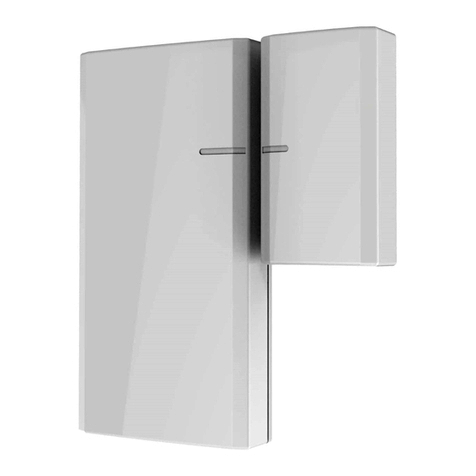
Sercomm
Sercomm SZ-DWS04 Installation

Daewoo
Daewoo WDS301 Quick installation guide

Phantom Cables
Phantom Cables CA-NDB313-W quick start guide
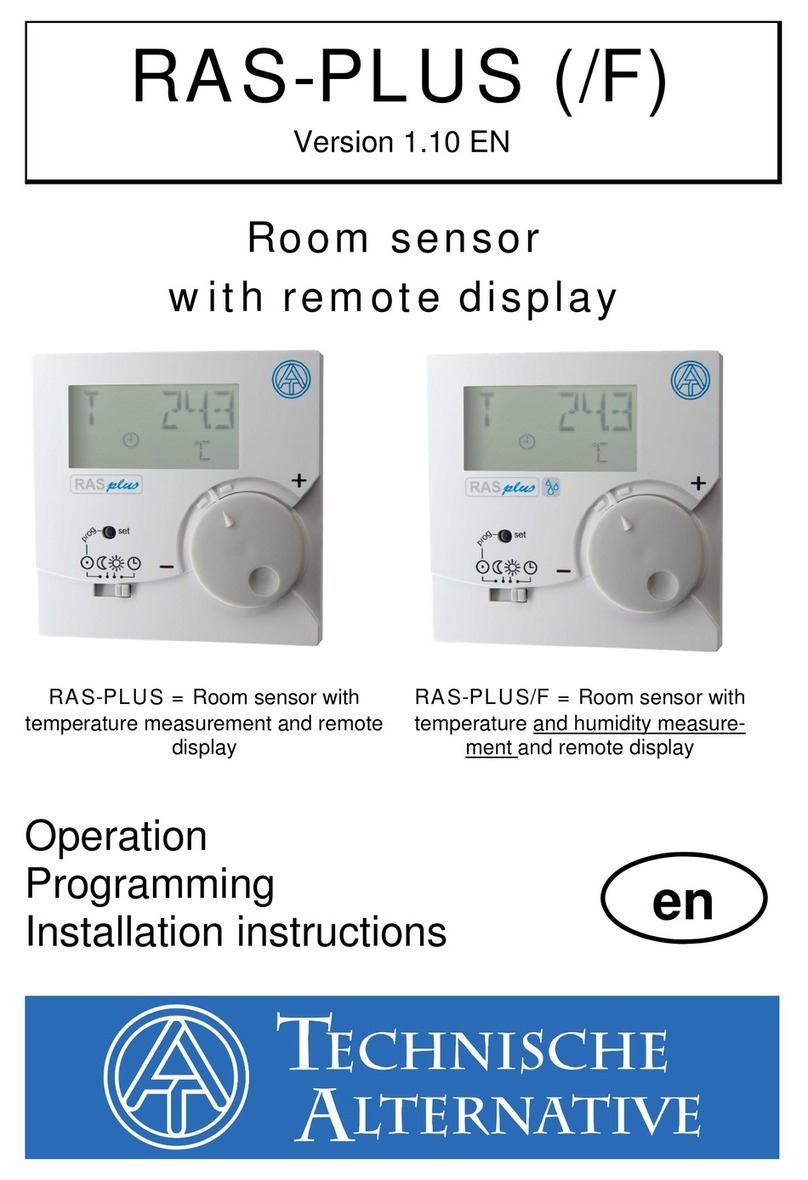
Technische Alternative
Technische Alternative RAS-PLUS Programming installation instructions
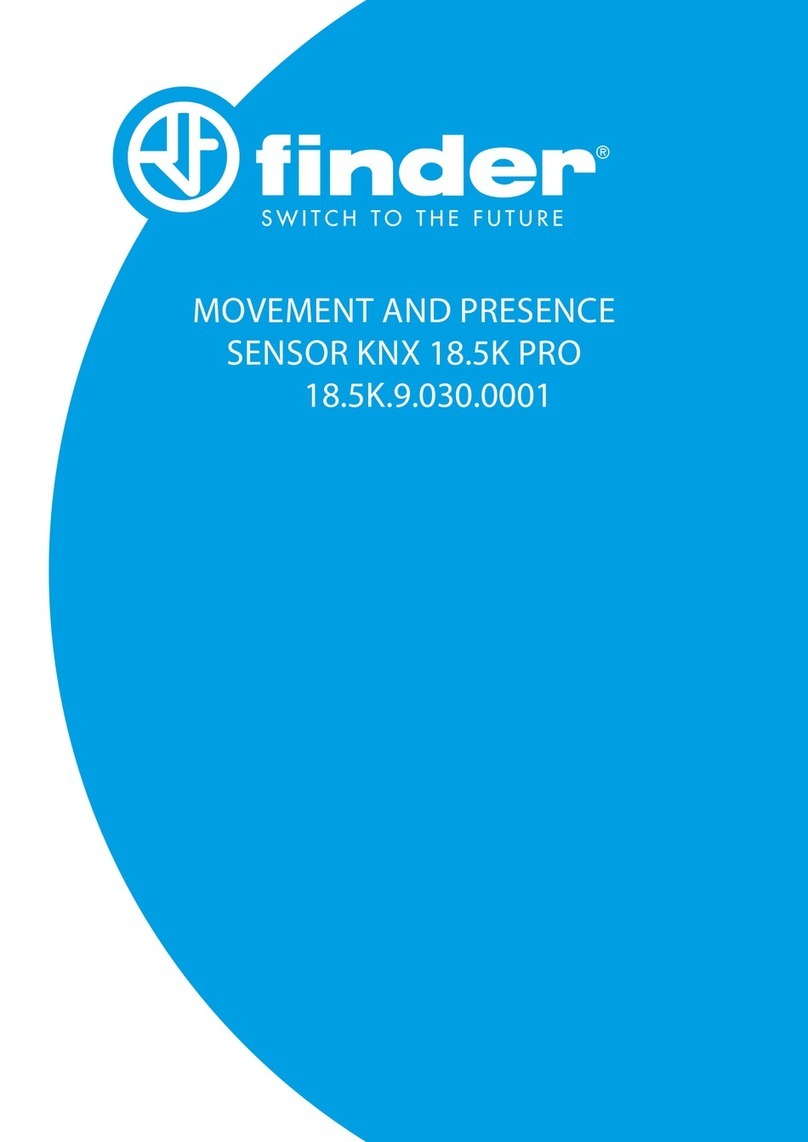
finder
finder 18.5K PRO user manual

Dräger
Dräger DragerSensor IR installation instructions

Tiiwee
Tiiwee PIR TWPIR03 manual

ATD Tools
ATD Tools ATD-5666 owner's manual
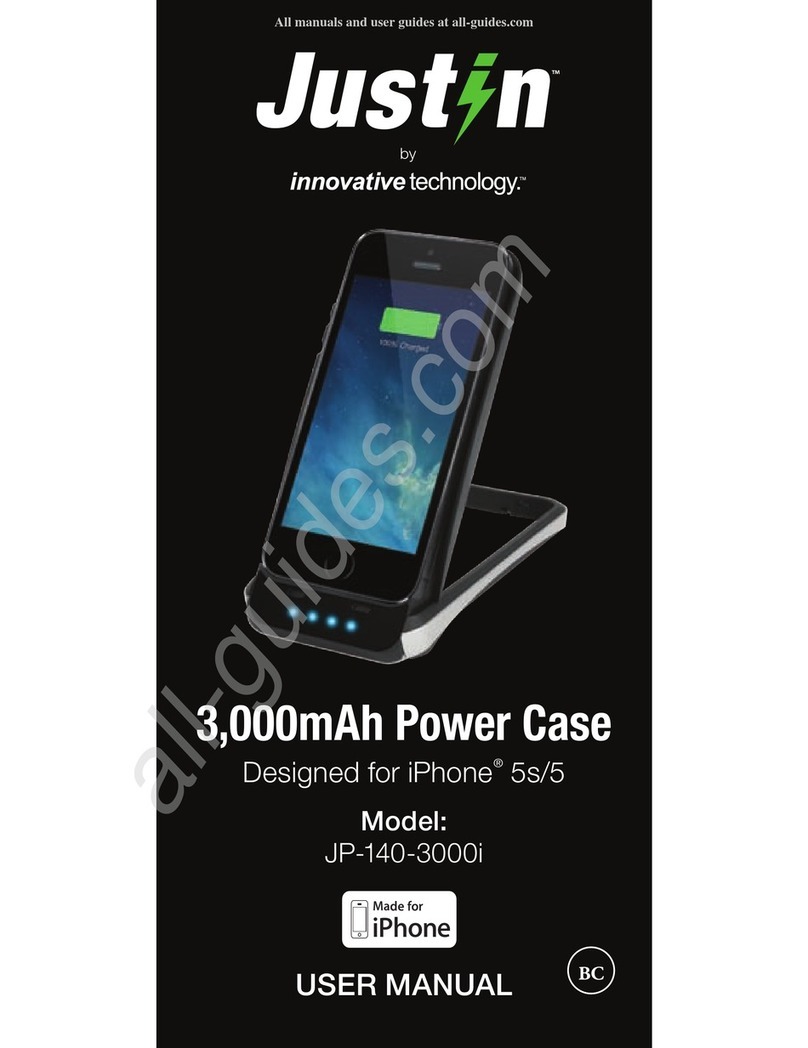
Innovative Technology
Innovative Technology Justin JP-140-3000i user manual
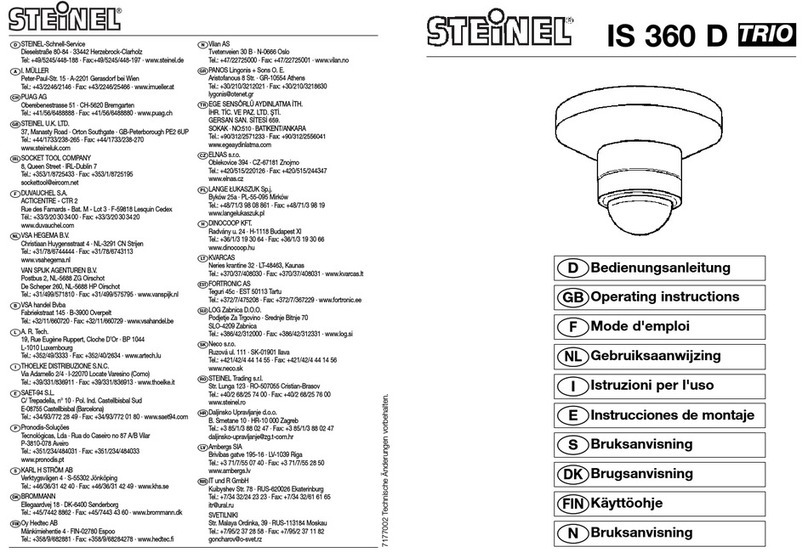
STEINEL
STEINEL IS 360 D TRIO operating instructions
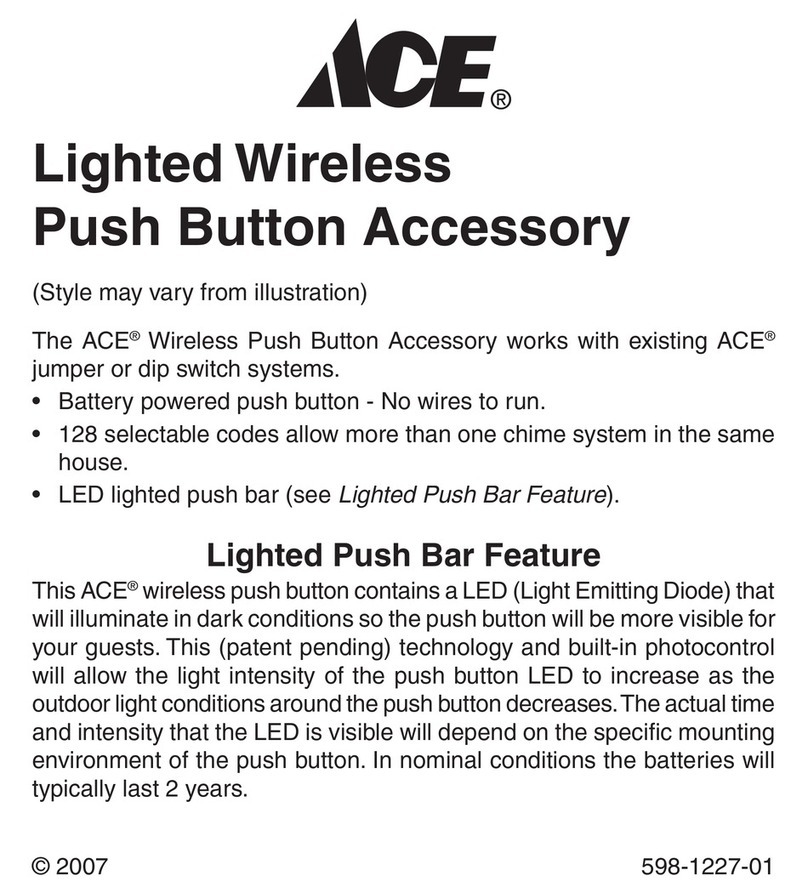
Ace
Ace Lighted Wireless Push Button Accessory... owner's manual

